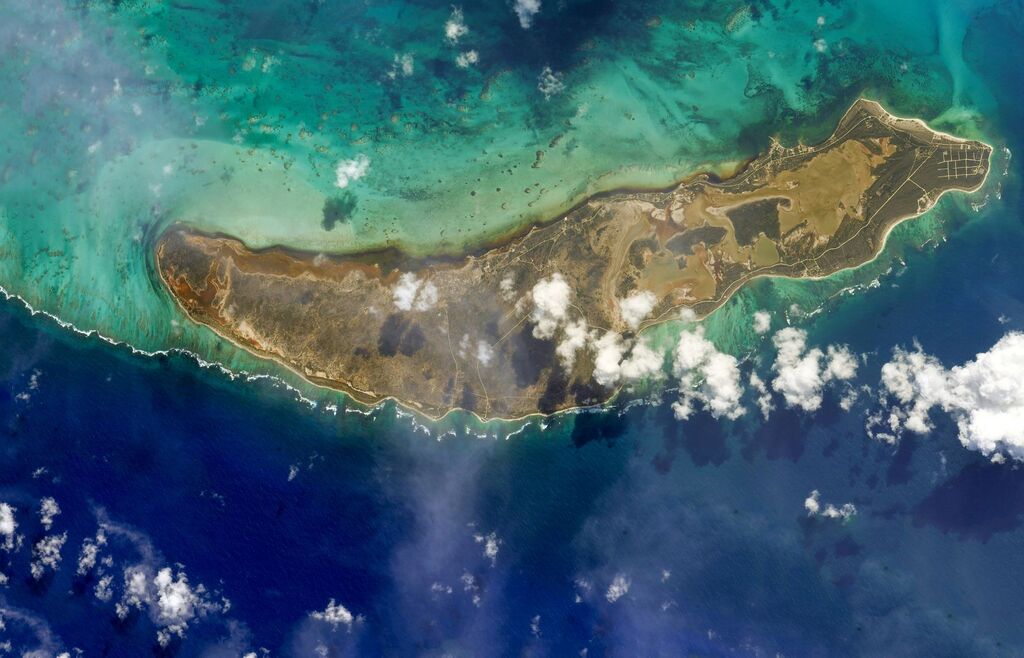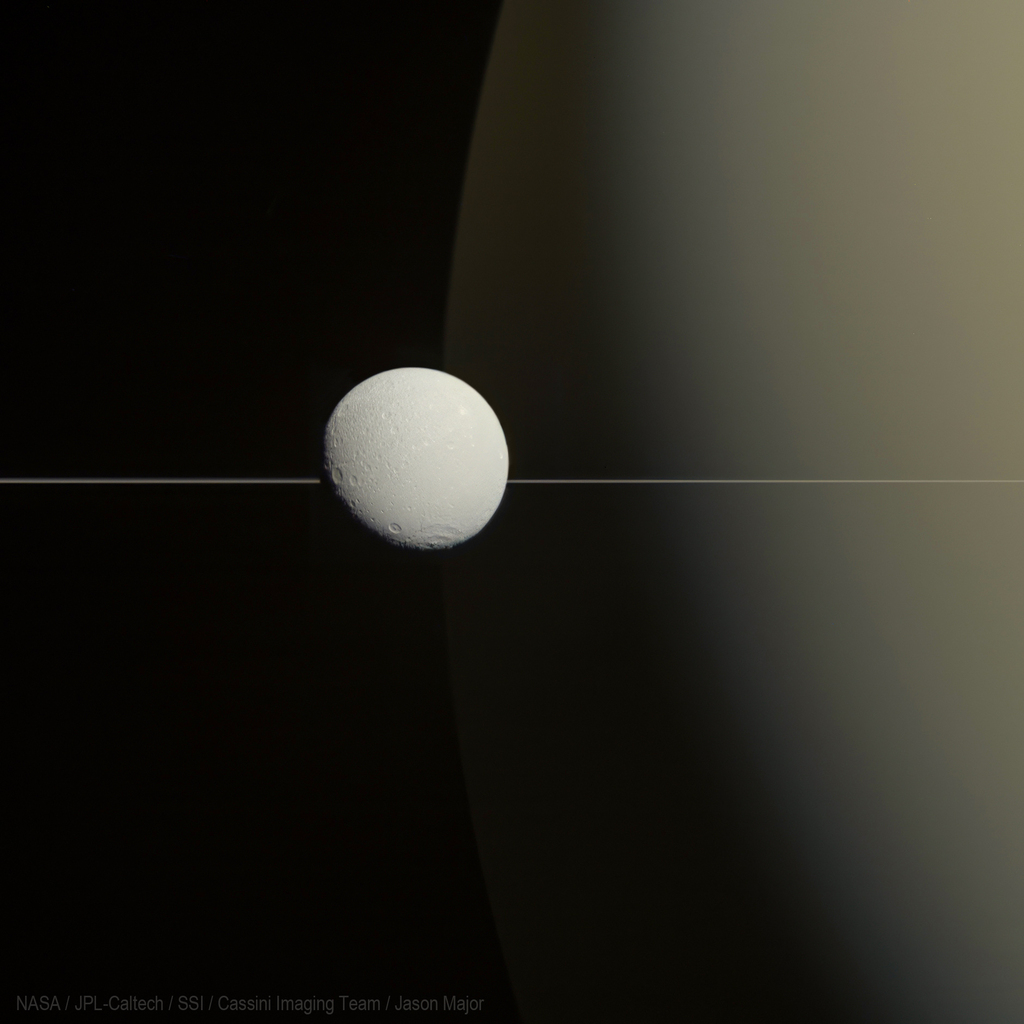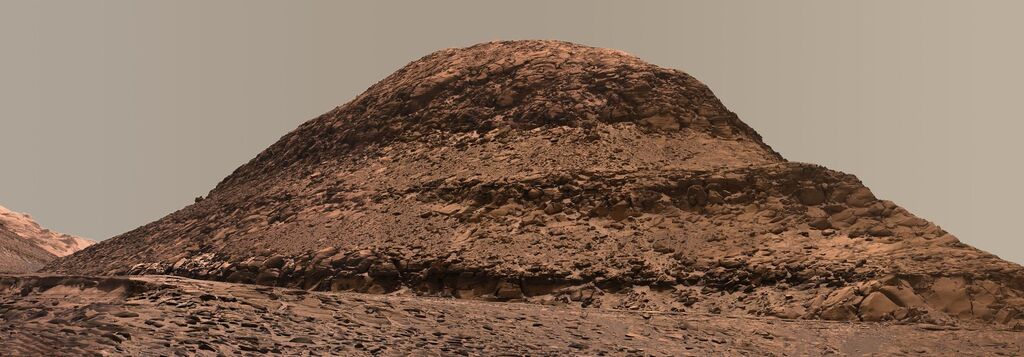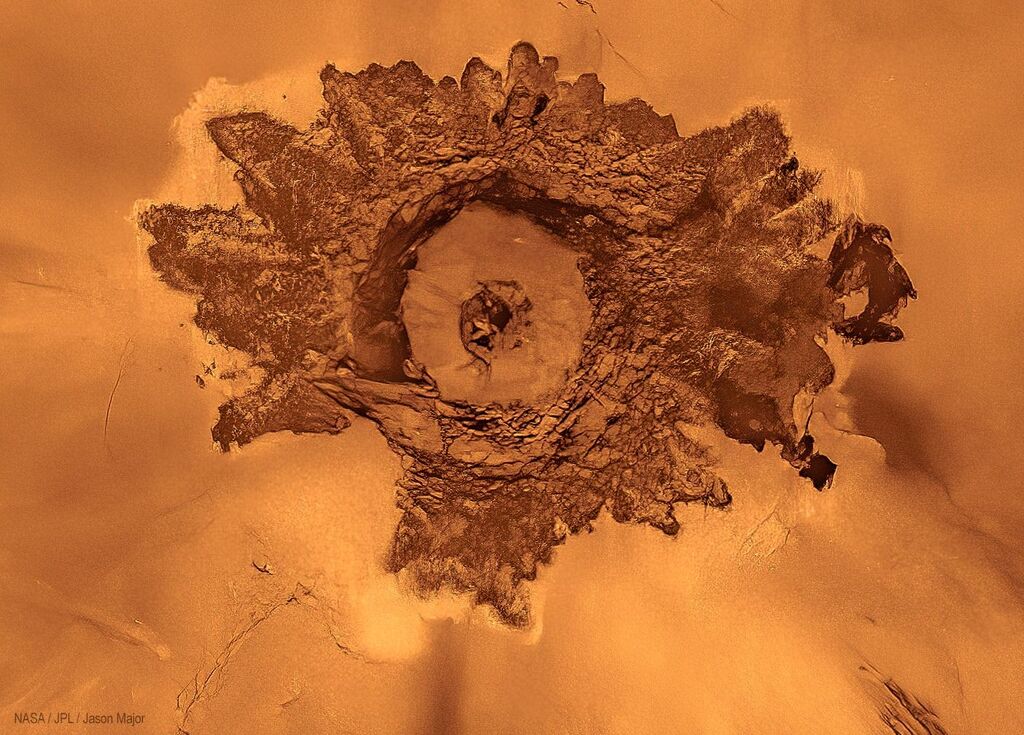
Planetary Picture of the Day
Week of October 16, 2023
A beautiful island, an icy moon, an amazing butte, and a Venusian crater.
Monday, October 16, 2023

Floating in the Ocean
Anegada, an island in the British Virgin Isles, as captured from the International Space Station on 23 September 2023 by ESA astronaut Andreas Mogensen during his Huginn Mission. When Andreas shared the picture on social media, he said:
"It is the only inhabited island in the island group that is made of coral and limestone, all the others are of volcanic origin.
It is home to a few hundred people as well as several endangered animals, like the Anegada rock iguana, and a number of turtle species. The Caribbean flamingo also used to stay here in the thousands but disappeared in the 1950s due to hunting. Now they are back in the hundreds."
Tuesday, October 17, 2023

Icy Moon Dione
The icy moon Dione is in front of Saturn with the rings seen edge-on. This image is a color composite of images acquired with NASA's Cassini spacecraft on August 17, 2015. Dione is 1,123 km wide and orbits Saturn at about the same distance that the Moon orbits Earth.
Wednesday, October 18, 2023

An Amazing Butte
What an amazing landscape our Curiosity continues to explore on Mount Sharp at Gale Crater. This butte has been carved a few times by something that seems related to cycles, so likely climate-related. Who knows? Maybe ice! It looks weird to be only the result of aeolian erosion, but it certainly makes for an interesting and stunning landscape. Taken with MastCam on Sol 3589.
Friday, October 20, 2023

Original image: https://buff.ly/3rXZCcs
Crater Adivar on Venus
The 30km-wide crater Adivar on Venus was imaged in synthetic aperture radar by NASA's Magellan spacecraft (1989–1994). To make this version, Jason Major inverted the black-and-white radar image, used noise reduction, and colored it to a "Venus" palette (based on Venera images.)
Radar images are not like optical images; they are not in any particular color wavelength for one, and they determine the smoothness (dark) or roughness (bright) of surface textures more than the way optical light reflects off them. Major felt inversion (reversal) showed the crater's shape better.





